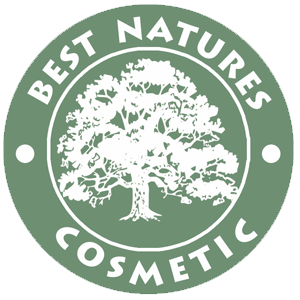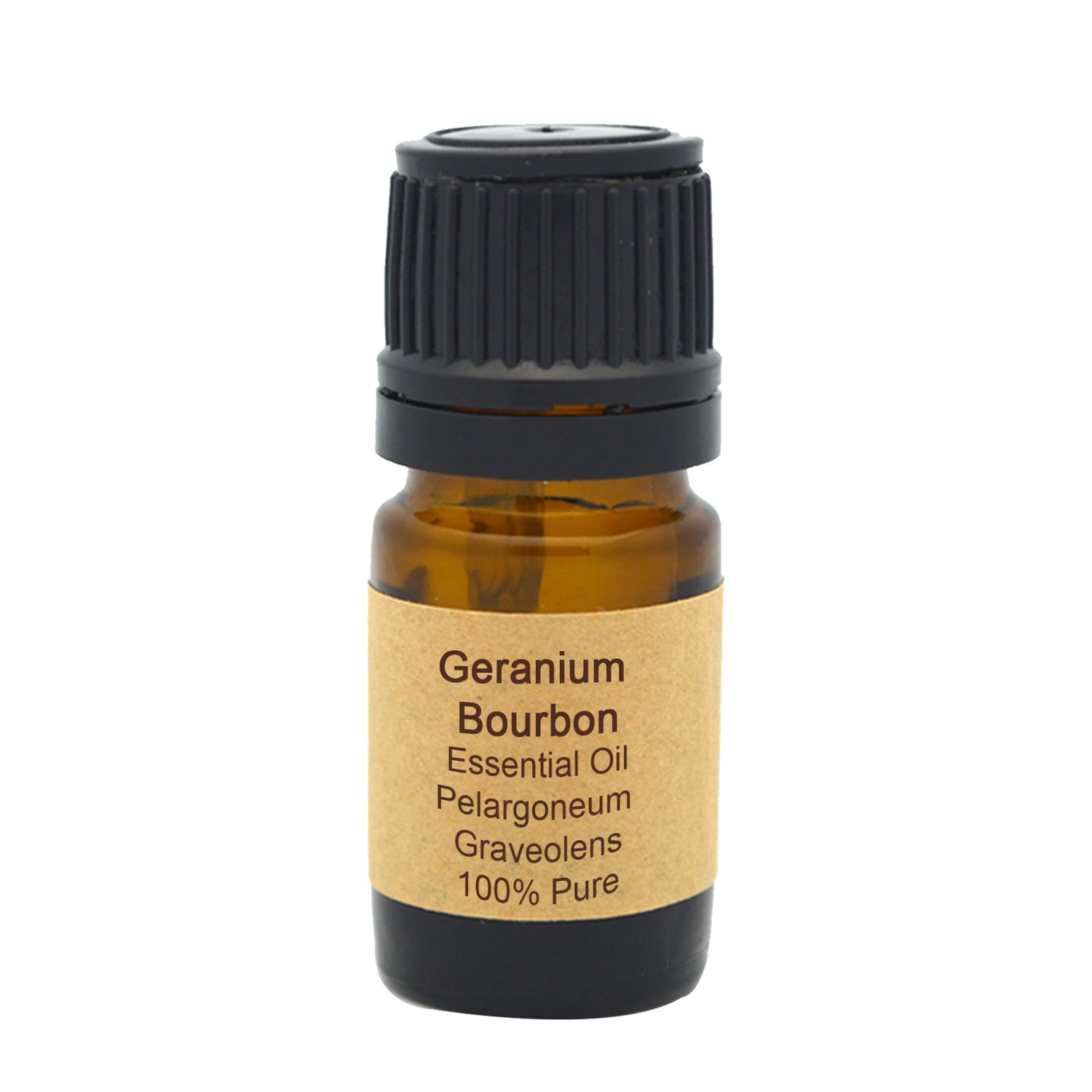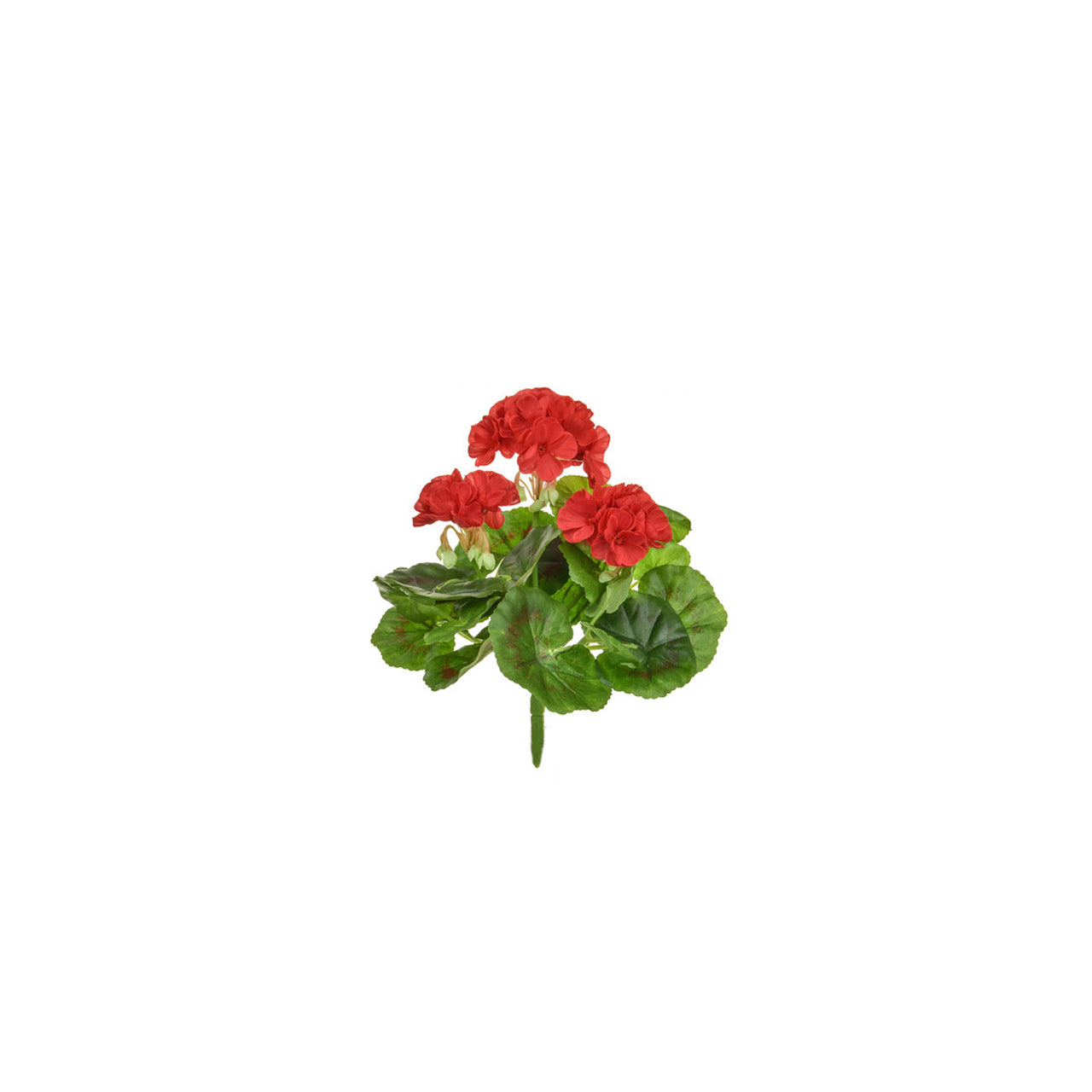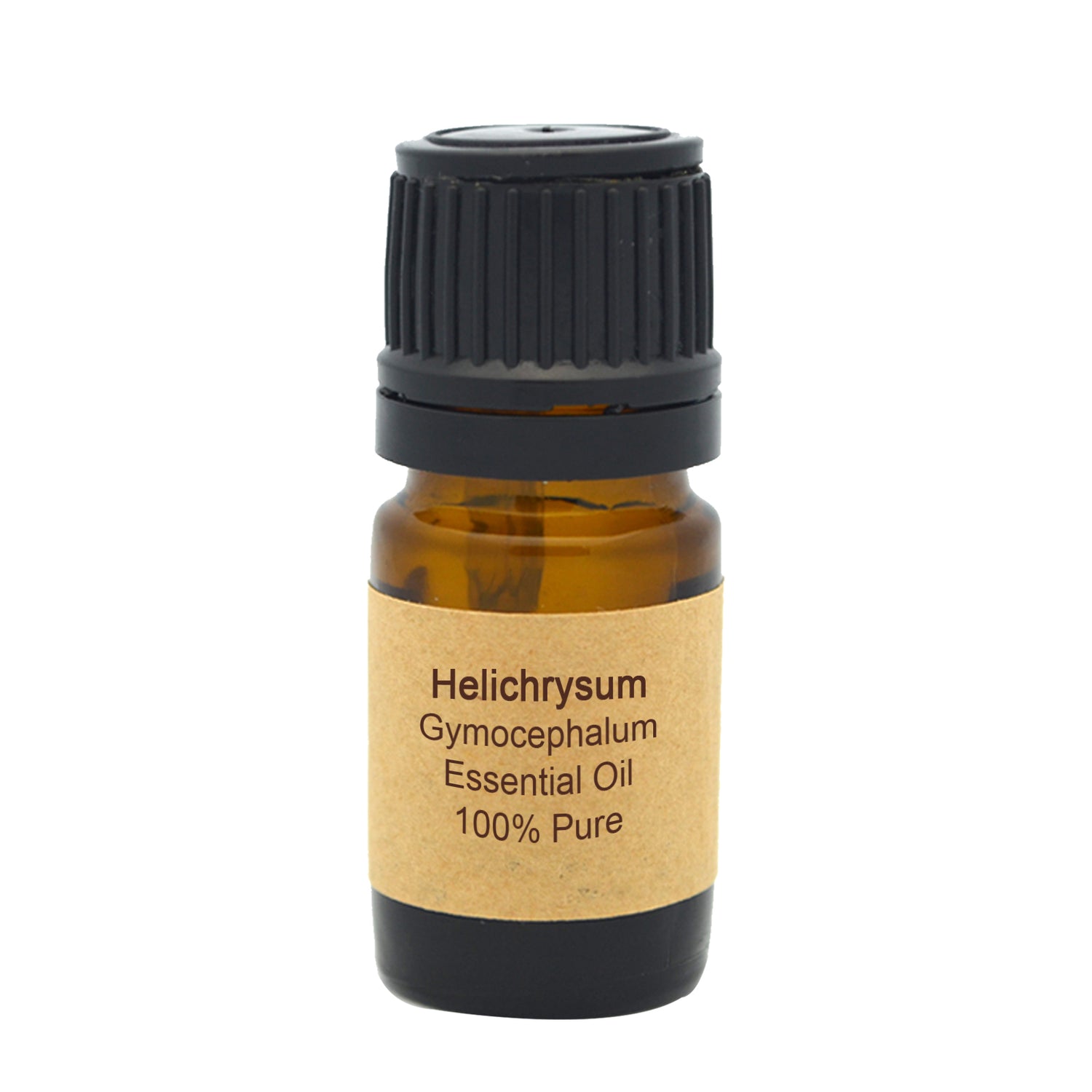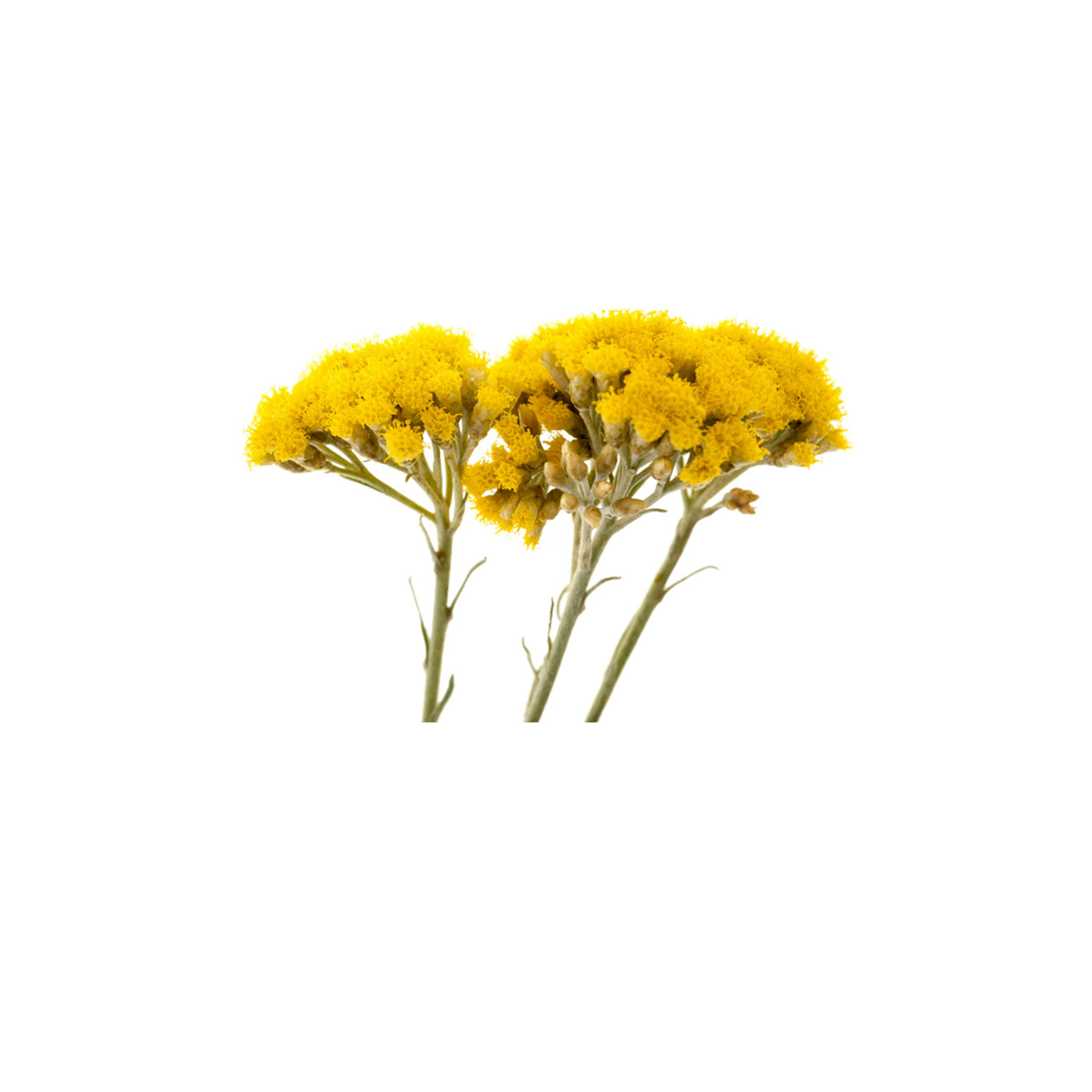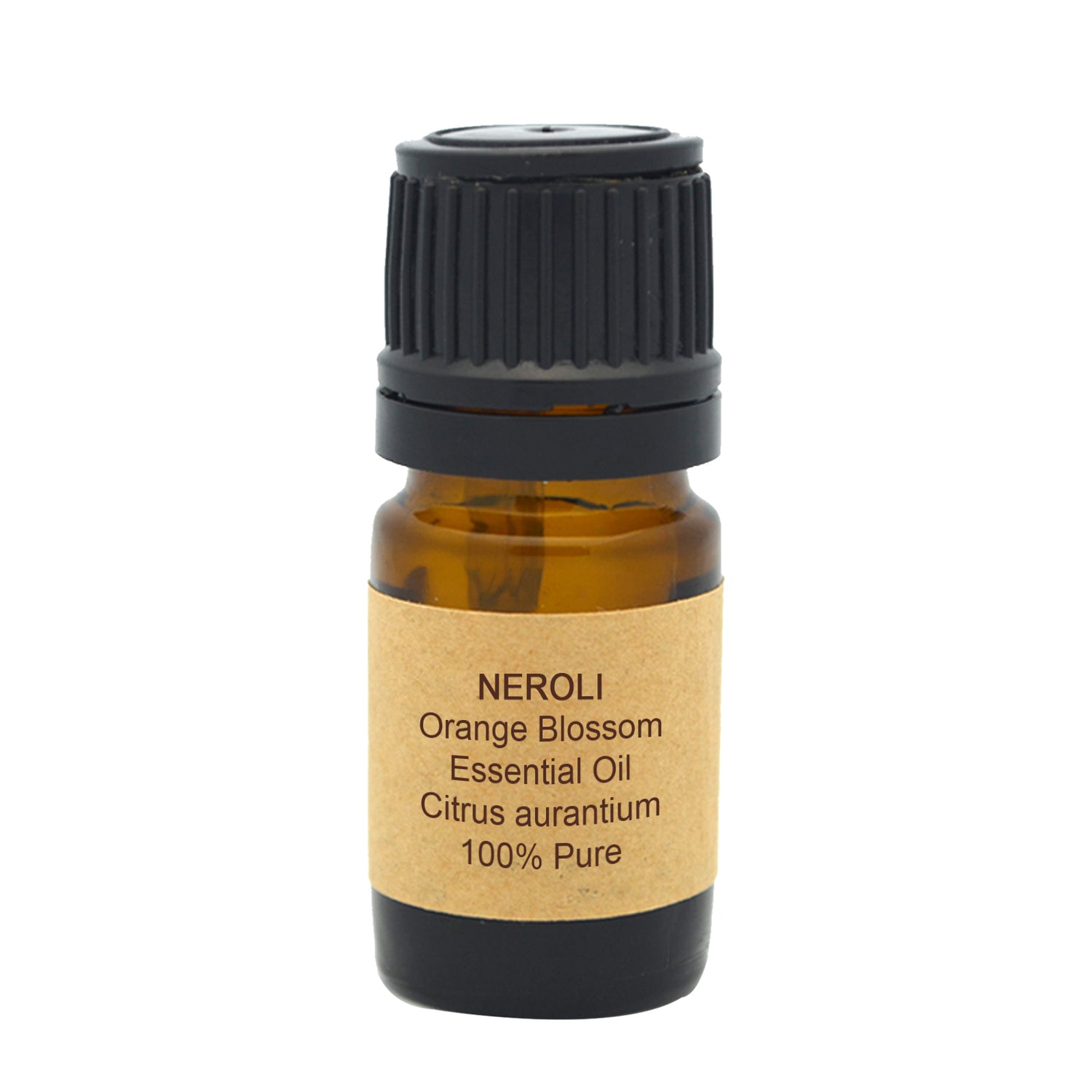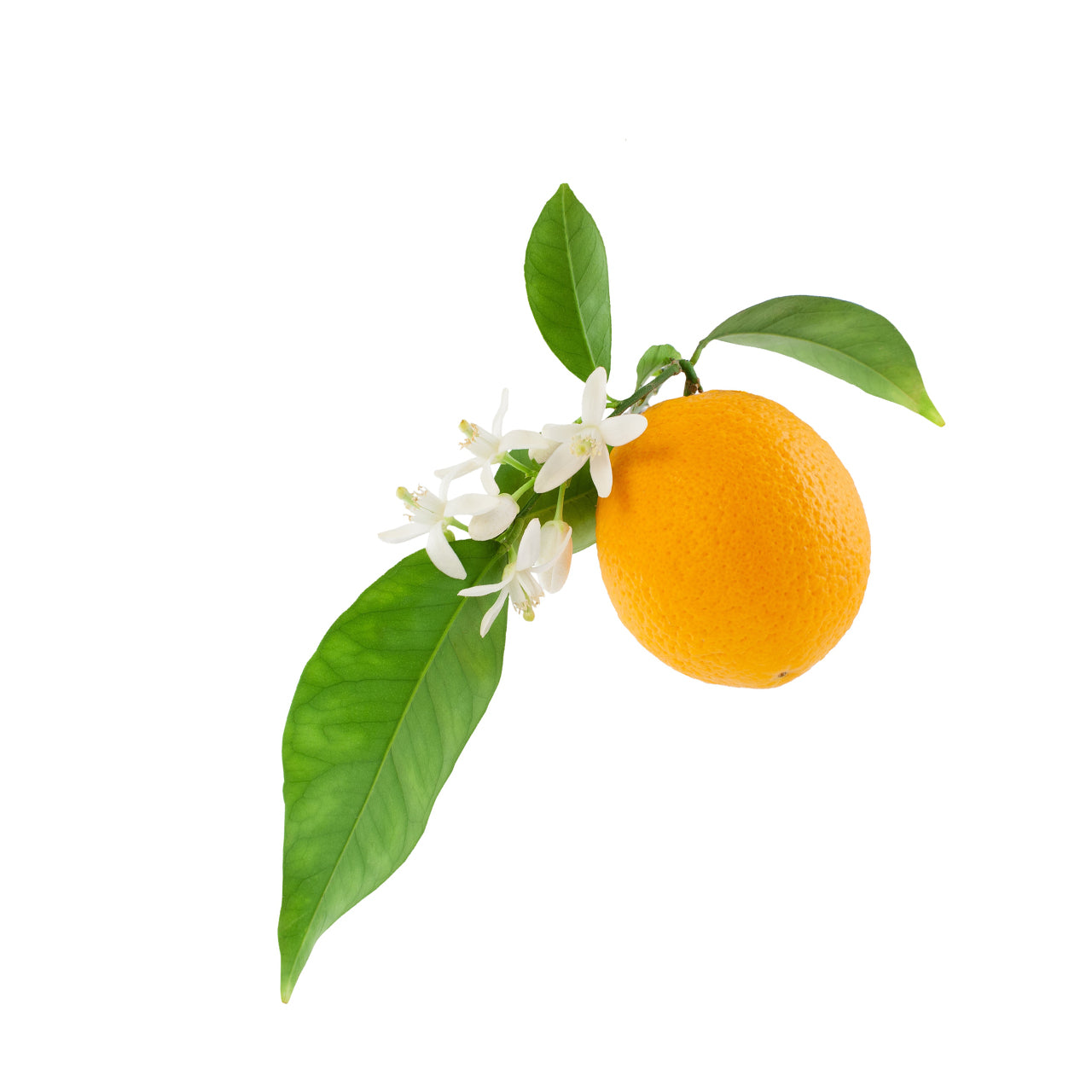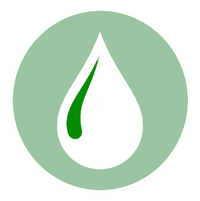3 of 48 products
3 of 48 products
Sort by:
Essential Oils
From $9.00
Unit price perGeranium is a hairy perennial shrub, often used in hedgerows, and stands up to about one meter high (3 feet) with pointed leaves, serrated at the edges and has pinkish-white flowers.
The therapeutic properties of Geranium Bourbon Essential Oil include the being used as an astringent, haemostatic, diuretic, antiseptic, anti-depressant, tonic, antibiotic, anti-spasmodic and as an anti-infectious agent.
This uplifting oil has a great all-over balancing effect and this extends to the skin, where it helps to create balance between oily and dry skin.
Geranium Bourbon can also be used to relieve feelings of stress and anxiety, promoting a sense of inner peace.
The strong smell of this oil is particularly good to ward off mosquitoes and head lice.
| Botanical Name | Pelargonium graveolens |
|---|---|
| Country of origin | China |
| Cultivation | Conventional (Non GMO) |
| Extraction Method | Steam Distilled |
| Plant part | Leaves and Flowers |
| Color | Pale yellow to greenish yellow liquid |
| Scent | Geranium Bourbon Essential Oil is a strong smelling oil with a floral aroma and a hint of mint. |
| Strength of Aroma | Strong |
| Note | Middle |
| Ingredients | Pelargonium graveolens. Main Constituents: Citronellol: 40% |
| Usage |
Use diluted - 50:50 dilution (one part essential oil: one part of vegetable oil). Then, apply several drops (2-4) on location, abdomen and temples. Apply to chakras/vitaflex points. Directly inhale or diffuse. |
| Blends well with | Basil, Bergamot, Citronella, Clary Sage, Fennel, Grapefruit, Jasmine, Juniper, Lavender, Lemon, Lemongrass, Neroli and Nutmeg. |
| History | The Geranium plants originated from South Africa as well as Reunion, Madagascar, Egypt and Morocco and were introduced to European countries such as Italy, Spain and France in the 17th century. There are over 200 species of geranium, some scented and some not. |
| Warnings | Geranium Oil is non-toxic, non-irritant and generally non-sensitizing. It can cause sensitivity in some people and due to the fact that it balances the hormonal system, it should be avoided during pregnancy. |
| Manufacture | Best Natures Cosmetic |
| Country of Manufacture | Canada |
| Disclaimer |
This information is for educational purposes only, it is not intended to treat, cure, prevent or, diagnose any disease or condition. Nor is it intended to prescribe in any way. This information is for educational purposes only and may not be complete, nor may its data be accurate. As with all essential oils, never use them undiluted. Do not take internally unless working with a qualified and expert practitioner. Keep away from children. If applying an essential oil to your skin always perform a small patch test to an insensitive part of the body (after you have properly diluted the oil in an appropriate carrier. |
From $8.00
Unit price perHelichrysum is a highly aromatic herb that has the capacity to grow in the most inclement of soil, hence its nickname “everlast.” It is native to the Mediterranean and North Africa and is widely cultivated in Spain, Italy, and Yugoslavia. It has been praised in aromatherapy most notably for bruises and wound healing. Extracts are also added to sunscreen to protect the skin from ultraviolet sundays.
Helichrysum assists with circulatory ailments such as varicose veins, bruises, and broken capillaries. It is also a wonderful skin tonic as it stimulates the production of new skin cells, vivifying the skin with an influx of healing cells and helping with acne, dermatitis, eczema, stretch marks, herpes, scar tissue, mature skin, and burns. The astringent properties constrict and help to reverse sagging skin. It also soothes and calms muscle spasms and aches, relieving pain associated with stiff joints and rheumatism related ailments. Lastly, the oil is is prized for relieving chronic coughs, bronchitis, sinus infections, excess mucous, and the common cold.
| Botanical Name | Helichrysum Gymocephalum |
|---|---|
| Country of origin | Madagascar |
| Cultivation | Wild harvested |
| Extraction Method | Steam Distilled |
| Plant part | Flowers |
| Color | A thin, clear, pale yellow to yellow liquid. |
| Scent | A Strong, Fresh, Camphorous, Herbaceous, Earthy Scent |
| Strength of Aroma | Medium |
| Note | Middle |
| Ingredients | Helichrysum Gymocephalum |
| Usage |
Bath (may need fixed oil), inhaler, light bulb ring, massage, mist spray, steam inhalation. Use diluted - 50:50 dilution (one part essential oil: one part of carrier oil). Then, apply several drops (2-4) on location, ankles and wrists. Apply to chakras/vitaflex points. Directly inhale or diffuse. |
| Blends well with | Chamomile, Lavender, Clary Sage, Rose, Clove Bud and any of the oils from the citrus oil family. |
| History |
Helichrysum has silvery gray, grassy foliage with a collection of golden flowers that blossom in midsummer, and whose colour last long after they have been picked and dried. Its name is derived from the Greek word helios meaning 'sun' and chrysos meaning 'gold'. This is a reference to the golden color of many of the flowers from this botanical genus. Helichrysum has been used since the time of the ancient who often used it after battles. |
| Warnings | If you are pregnant, consult a qualified aromatherapist for suitability and safety of specific oils. Many oils should not be used during pregnancy, some only need to be avoided for the first 3 - 4 months. |
| Manufacture | Best Natures Cosmetic |
| Country of Manufacture | Canada |
| Disclaimer |
This information is for educational purposes only, it is not intended to treat, cure, prevent or, diagnose any disease or condition. Nor is it intended to prescribe in any way. This information is for educational purposes only and may not be complete, nor may its data be accurate. |
From $25.00
Unit price perNeroli Essential Oil increases circulation and stimulates new cell growth. It can prevent scarring and stretch marks, and has been found useful in treating skin conditions linked to emotional stress. Any type of skin can benefit from this oil, although it is particularly good for dry, irritated or sensitive skin. It regulates oiliness and minimizes enlarged pores. Neroli Oil helps to clear acne and blemished skin, especially if the skin lacks moisture. With regular treatment, it can reduce the appearance of fragile or broken capillaries and varicose veins. Other properties include being antidepressant, antiseptic, antispasmodic, aphrodisiac, carminative, cordial, deodorant, digestive, stimulant (nervous) and tonic (cardiac, circulatory).
Neroli essential oil or orange blossom oil supports the digestive system and nervous system. Known for its healing effects on the mind, body and spirit it is a highly regarded oil used in Ancient Egypt.
It is produced from the orange blossom flower. When using this oil one feels very present. It takes about 1000 pounds of orange blossom flower to make 1 pound of Neroli oil.
Although the use of Neroli and orange blossoms go back to Ancient Egypt, the word Neroli was taken from a French born Italian princess, Anne-Marie de la Tremoille who was the Countess of Nerola. She introduced the oil in 1670 and used it for perfume and cologne.
Neroli essential oil is all about staying in the present moment and not reminiscing of the past; or even worrying about the future. For us to manifest what we want we must be completely in our power and be present energetically in the moment.
Interesting that panic and fear, are produced when we separate our mind and body. This is because we are literally in two different places. Neroli brings us back to one plane quickly and provides protection as well.
Neroli essential oil has been used for thousands of years to accelerate self-actualization by keeping us in the present, and gathering many of our scattered parts in the different etheric levels. It opens the heart and releases emotions of powerless and self imposed restriction.
Use diluted - 50:50 dilution (one part essential oil: one part of carrier oil). Then, apply several drops (2-4) on location, ankles and wrists. Apply to chakras/vitaflex points. Directly inhale or diffuse.
What Chakra is Affected? Sacral, heart and crown chakras.
What is the Corresponding Chakra Color? Green.
| Botanical Name | Citrus aurantium |
|---|---|
| Country of origin | Egypt |
| Cultivation | Conventional (Non GMO) |
| Extraction Method | Steam Distilled |
| Plant part | Blossom |
| Color | Dark greenish yellow liquid. |
| Scent | Neroli Essential Oil has a sweet, floral citrus aroma. Many aromatherapists refer to Neroli as an exotic and exquisite essential oil. |
| Strength of Aroma | Strong |
| Note | Middle |
| Ingredients | Citrus aurantium. Main Constituents: Linalyl acetate: 23%, Linalool: 16%, Limonene: 20.30%. |
| Usage |
Use diluted - 50:50 dilution (one part essential oil: one part of carrier oil). Then, apply several drops (2-4) on location, ankles and wrists. Apply to chakras/vitaflex points. Directly inhale or diffuse. |
| Blends well with | Lavender, Lemon, Clary Sage, Myrrh and spice oils such as Nutmeg, Cinnamon Bark and Clove Bud. |
| History | Though Bitter Orange Essential Oil has been around for centuries, Neroli Essential Oil wasn’t discovered until the seventeenth century. It was named after Anna Maria de la Tremoille, princess of Nerola. The oils properties were extremely valued by the people of Venice who used it against plague and fevers. |
| Warnings | This oil is non-toxic and non-sensitizing. Avoid use during pregnancy. |
| Manufacture | Best Natures Cosmetic |
| Country of Manufacture | Canada |
| Disclaimer |
This information is for educational purposes only, it is not intended to treat, cure, prevent or, diagnose any disease or condition. Nor is it intended to prescribe in any way. This information is for educational purposes only and may not be complete, nor may its data be accurate. |
